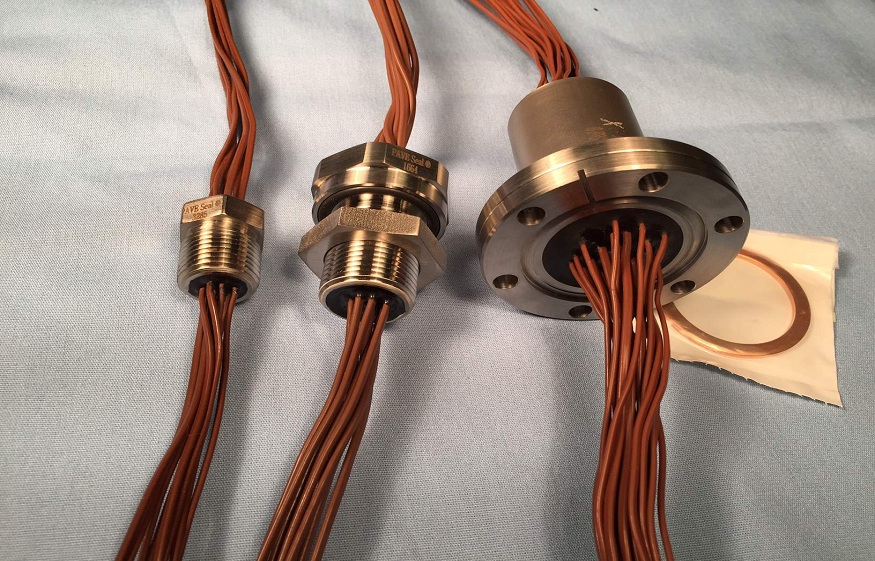Hermetic feedthroughs are crucial components in modern high-tech devices, providing reliable electrical, optical, or fluid connections through sealed barriers. These devices require airtight or vacuum-sealed environments to function correctly, and hermetic feedthroughs ensure signal integrity, prevent contamination, and maintain structural reliability. From medical instruments to aerospace technology, these components play a critical role in protecting sensitive systems while maintaining high performance.
What Are Hermetic Feedthroughs?
A hermetic feedthrough is a device that allows connections—electrical, optical, or fluid—to pass through an enclosure without compromising its environmental integrity. By maintaining a vacuum-tight or airtight seal, these feedthroughs prevent air, moisture, and contaminants from entering critical systems. They are essential in applications where exposure to outside conditions could cause equipment failure, reduce efficiency, or pose safety risks.
Hermetic Feedthroughs in Aerospace and Defense
Aerospace and defense applications demand high reliability and performance in extreme conditions. Hermetic feedthroughs are widely used in:
- Satellites and spacecraft: Electrical and RF connections must pass through pressurized compartments without compromising vacuum integrity.
- Radar and communication systems: Coaxial hermetic feedthroughs transmit high-frequency signals while protecting sensitive electronics.
- Military avionics: Multi-pin feedthroughs provide secure connections in vibration-heavy environments.
The ability to withstand extreme temperatures, pressure variations, and mechanical stress makes hermetic feedthroughs indispensable in aerospace and defense systems.
Use in Medical Devices
Medical technology increasingly relies on compact, high-performance devices that operate in controlled environments. Hermetic feedthroughs are used in:
- Implantable devices: Pacemakers and neural stimulators require small, durable feedthroughs to maintain sterile and waterproof seals.
- Imaging equipment: MRI machines and CT scanners use hermetic feedthroughs to transmit signals without compromising the vacuum or cooling systems.
- Surgical instruments: Hermetic feedthroughs provide reliable connections for sensors and control electronics in harsh sterilization environments.
By ensuring long-term reliability and biocompatibility, hermetic feedthroughs help maintain patient safety and device performance.
Industrial and Semiconductor Applications
High-tech industrial equipment and semiconductor manufacturing rely heavily on hermetic feedthroughs:
- Vacuum chambers and furnaces: Glass-to-metal and ceramic-to-metal feedthroughs maintain high-vacuum conditions while transmitting electrical signals.
- Plasma processing equipment: Hermetic feedthroughs handle high voltages and maintain isolation under harsh chemical exposure.
- Cleanroom electronics: Multi-pin and optical feedthroughs enable precise monitoring and control without contaminating sensitive environments.
These applications demand high reliability, precise engineering, and long-term durability to minimize downtime and prevent costly failures.
Scientific and Research Instrumentation
Hermetic feedthroughs are critical in advanced research and laboratory instruments:
- Cryogenic systems: Specialized feedthroughs maintain vacuum and thermal insulation while transmitting signals at extremely low temperatures.
- Particle accelerators: High-voltage and RF feedthroughs provide safe transmission of energy in sealed environments.
- Optical and laser systems: Optical feedthroughs allow fiber optic signals to pass through vacuum barriers without loss or contamination.
In research applications, feedthroughs ensure experimental accuracy and protect sensitive equipment from environmental interference.
Advantages of Using Hermetic Feedthroughs in High-Tech Devices
The benefits of hermetic feedthroughs make them essential in high-tech applications:
- Environmental protection: Prevents exposure to moisture, air, and contaminants.
- Electrical integrity: Maintains insulation, prevents short circuits, and reduces signal loss.
- High reliability: Performs consistently under extreme temperatures, vibration, and pressure changes.
- Space efficiency: Multi-pin designs reduce the number of separate connections and save valuable space.
- Longevity: Durable construction ensures long-term performance in critical applications.
Selecting the Right Hermetic Feedthrough
Choosing the right feedthrough for high-tech devices requires consideration of several factors:
- Type of signal: Electrical, optical, or fluid transmission.
- Voltage and current requirements: High-voltage applications need specially designed feedthroughs.
- Environmental conditions: Temperature, pressure, vacuum, and chemical exposure.
- Number of connections: Single-pin, multi-pin, or coaxial based on device complexity.
- Material selection: Metals, glass, and ceramics are chosen for durability, insulation, and sealing capability.
By evaluating these factors, engineers can select the feedthrough that provides reliable performance in demanding applications.
Conclusion
Hermetic feedthroughs are indispensable in high-tech devices, providing secure, reliable, and airtight pathways for electrical, optical, and fluid connections. From aerospace and defense systems to medical devices, industrial machinery, and scientific research instruments, these components ensure operational reliability, protect sensitive environments, and maintain signal integrity.
For engineers and manufacturers designing high-performance devices, selecting the right hermetic feedthrough is crucial. Proper material selection, construction type, and application-specific design ensure that high-tech devices operate safely and efficiently under extreme conditions









